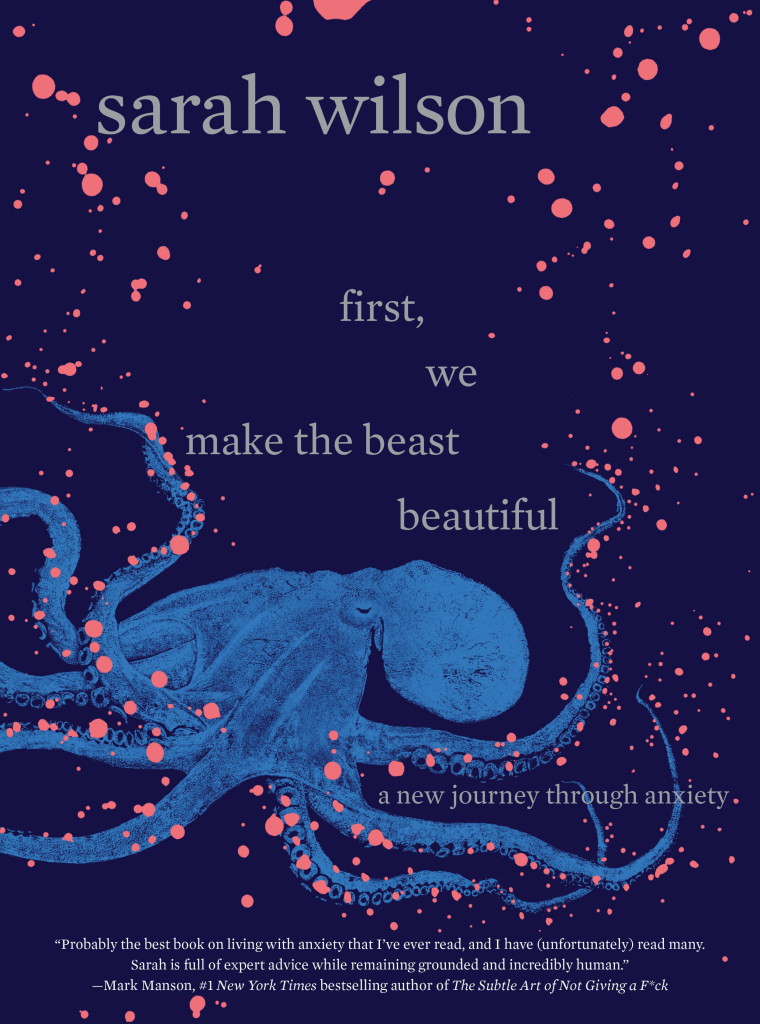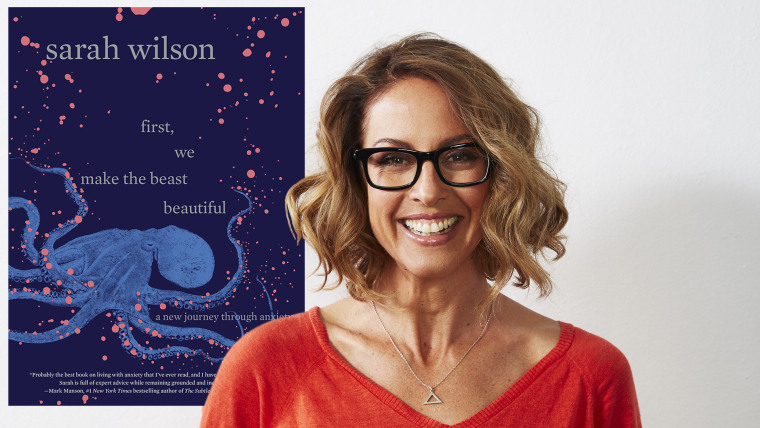Sarah Wilson is a journalist, entrepreneur, and the New York Times best-selling author of "I Quit Sugar." She is the former editor of Australian Cosmopolitan, and she blogs on philosophy, anxiety, minimalism, toxin-free living and anti-consumerism at sarahwilson.com. Most recently she published First, We Make the Beast Beautiful: A New Journey Through Anxiety.
I’ve lived with various disorders — bipolar, obsessive-compulsive disorder, insomnia and more — for as long as I remember. I’ve managed them while running a large online wellness business, hosting national TV shows and during my time editing Cosmopolitan magazine in Australia.
But in the past eight years, I’ve been on a quest to find a way to thrive with them. A quest that led to my writing my new book First, We Make the Beast Beautiful and connecting with TODAY’s Carson Daly, who shares my deep belief that the fretful, grasping, thought-cascading buzz at my core might just have a wonderful purpose.
“Anxiety is our superpower,” we told each other.
I want to give you a taste of how anxiety can be recast as a beautiful and enabling tool:
1. There’s a super easy fix that fools our brain into ditching anxiety!
Studies show walking is one of the most effective ways to manage anxiety.
When we’re anxious, the surging stress hormones have nowhere to go, so they build up. Movement is anxiety’s outlet, metabolizing excessive stress hormones. Studies show a 20-30-minute walk, five times a week, will make people less anxious.

Another by the European Journal of Developmental Psychology looked at why walking, specifically, gets us cerebrally fired up. Normally, multitasking results in weakened performance. But it found walking may improve cognition.
If I feel an anxiety episode coming on, I make myself go for a walk around the block. Within a few minutes, the anxiety simply stops.
2. A panic attack generally only lasts 20-30 minutes.
A panic attack is basically a compounding panic about the perfectly normal physical symptoms of anxiety. We are programed to prepare for flight or fight in the face of a threat. In the past, we experienced the shortness of breath, elevated heart rate and blood loss from the head (dizziness) as all our resources went into outrunning a saber-toothed tiger. Today, the flight-or-fight part of the brain (the anxiety center) works in exactly the same way, but it can’t tell the difference between a real and a perceived threat.
But we’ve been programmed to have this reaction for about 20-30 minutes only — enough time to fight or flee a tiger. When you know this, you can ride it out. It’s just a bunch of reactions, right? Reactions won’t kill us!
I find this wonderfully comforting to know.
3. Wearing the same outfit every day helps.
The decision-making part of the brain is very closely linked to the part of the brain that controls anxiety. Thus, when we’re anxious, we can’t make decisions and making decisions makes us anxious.
My research found the most popular fix among successful entrepreneurs and creatives is to automate their morning routine as much as possible — reduce their decisions — so they have less anxiety, and can be more creative. Wearing the same outfit was particularly popular.

Behavioral psychologists call it dropping “certainty anchors.” Drop as many as you can and they can hold you firmly so that you can flap about as creatively — or anxiously— as required.
4. We fool our brains to think we’re excited, not anxious. Serious!
At a biological level, anxiety and excitement release the same response in our brains. Studies show we can very easily convince our brains to believe we’re the latter, not the former.
Harvard University researchers found simply saying “I’m excited” out loud may reframe anxiety into excitement, which in turn, improved performance during anxiety-inducing activities. Tiger Woods once declared, “The day I’m not nervous is the day I quit. To me, nerves are great. That means you care.”
I try to play with all these various tricks. Over the years, I’ve learned I can choose how I frame my anxiety in my life. I can’t get rid of it, and nor do I want to anymore. Now that I’m free from trying to silence it, or medicate it into submission, I can play around with making it beautiful.

